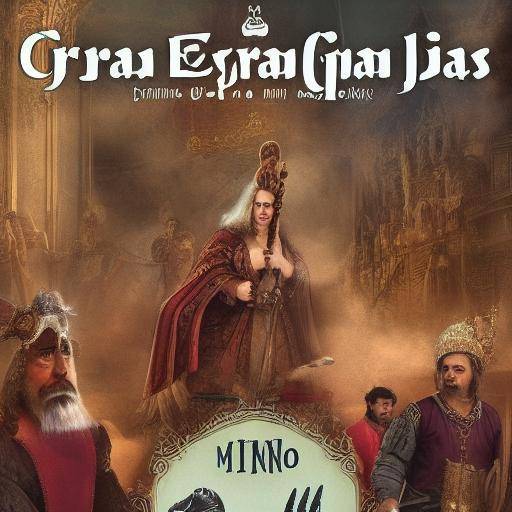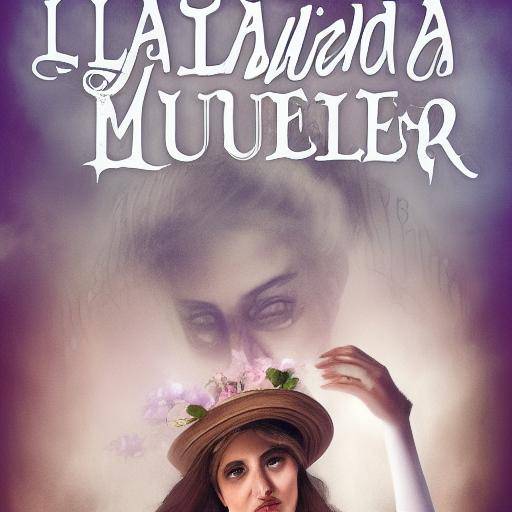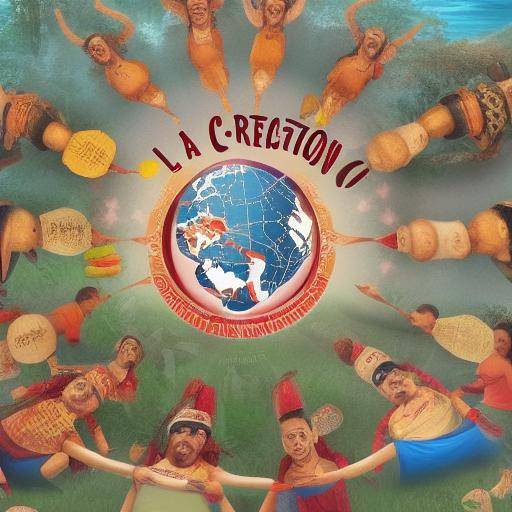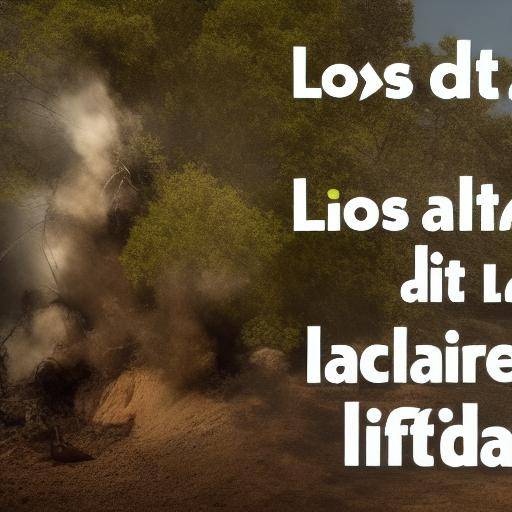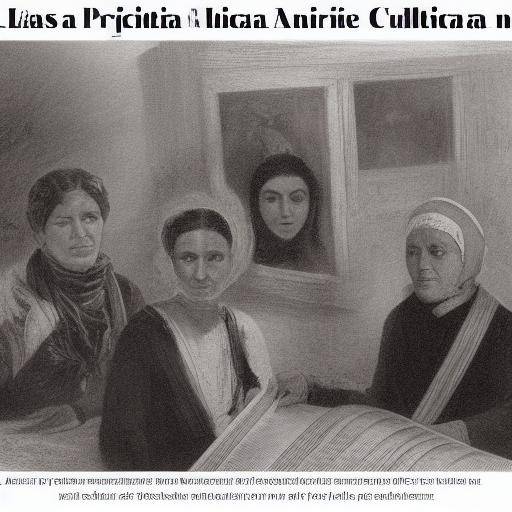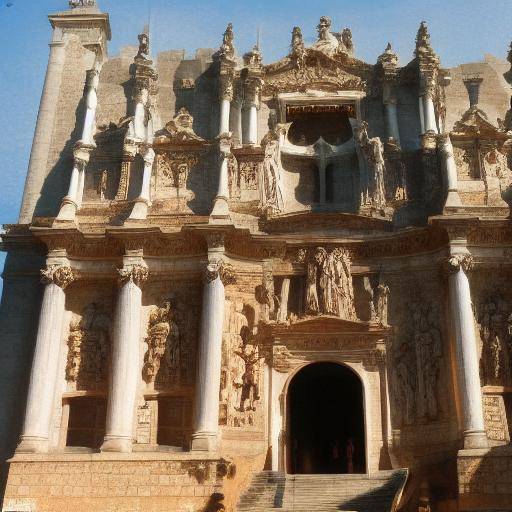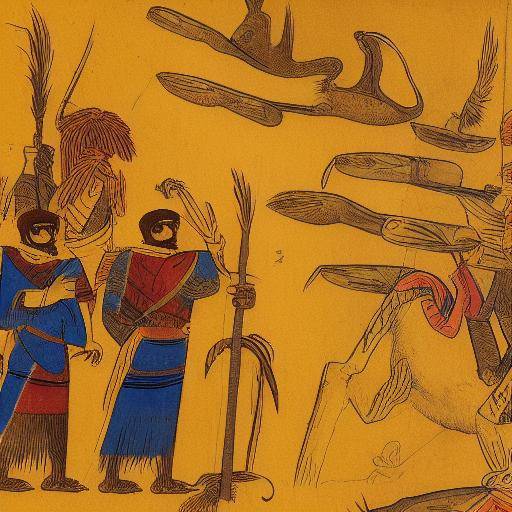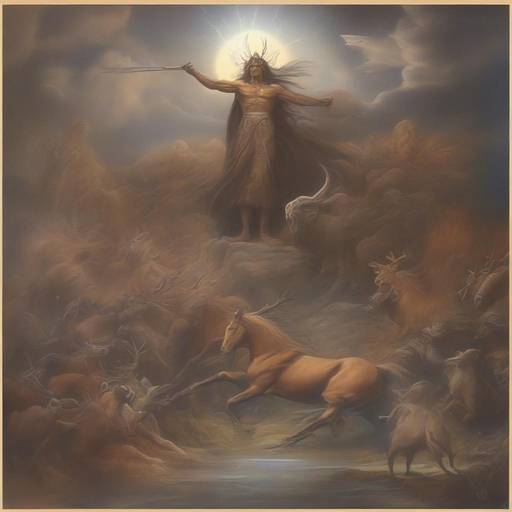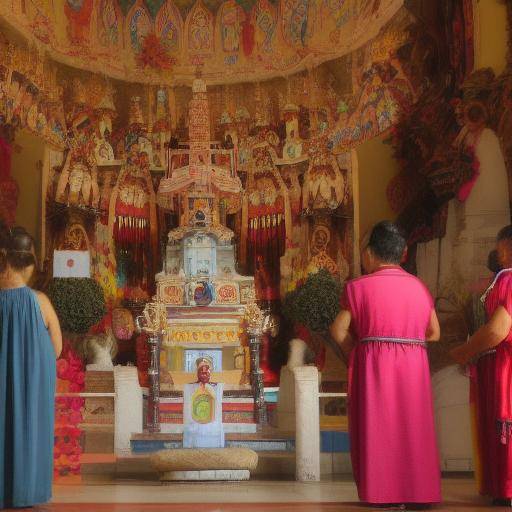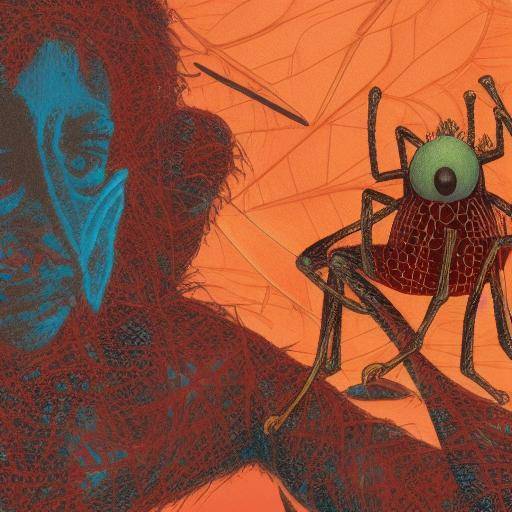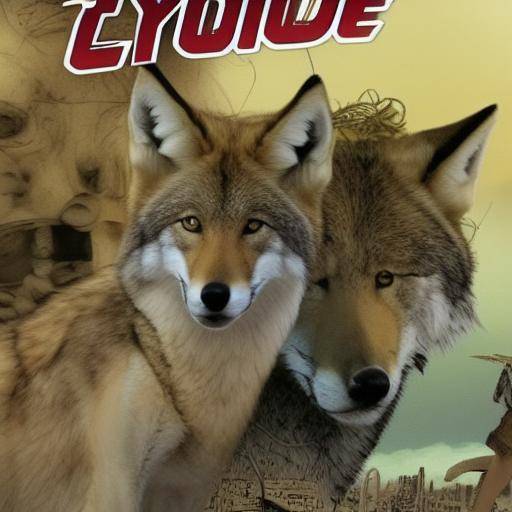
Introduction
In the vast native mythology of the Americas, coyote stands out as a powerful and multifaceted figure. Known for his cunning and ability to deceive, coyote is a central character in countless indigenous accounts. In this exploration of "The Stories of Coyote: El Embaucador", we will discover the fascinating legends surrounding this enigmatic animal, its role in native mythology, and its facet as an embaucator. From its ancestral origins to its influence on contemporary culture, this article will immerse us in a world of mystery, wisdom and deception.
History and Background
The coyote, called in the Nahuatl language as "coyotl", has been a very significant figure in the native mythology of North and Central America for millennia. Among the various tribes and cultures, the coyote has assumed different roles, from the cunning creator to the disengaged bromist. His versatility as a mythological figure makes him a character wrapped in the complexity of human condition and the natural environment.
Origins and Evolution
The precise origin of coyote stories is lost in time, intertwining with the very history of indigenous civilizations. The stories vary according to the region, but the presence of the coyote as a central character is a constant. These stories are believed to have emerged as a way of transmitting knowledge, values and traditions among generations.
The first visual representations of the coyote date back to artifacts found in ancient archaeological sites, which evidences its roots in pre-Columbian cultures. As native societies developed, the coyote was incorporated into ceremonies, rituals and beliefs, enriching its influence on the daily lives of these communities.
Meaning and Symbolism
The coyote represents a vast spectrum of attributes and characteristics, from cunning and wit to chaos and mischief. Its symbolic role transcends concrete narratives, becoming a symbol of adaptability and survival in adverse environments. The dual nature of the coyote, often portrayed as a being that challenges established norms, demonstrates a profound understanding of human and natural complexities.
Highlights
Within native mythology, coyote stories are displayed in a diversity of myths, legends and oral accounts. Some of the best known myths include theft of fire and the creation of the world. These stories illustrate the supernatural qualities of coyote, as well as its influence on the configuration of the universe and society.
Analysis in Deep
The coyote, as an intoxicator, has been interpreted in various ways over time. His cunning and ability to challenge expectations make him a complex character that awakens reflections on human nature and the balance between order and chaos.
Influence in Contemporary Culture
Despite their ancestral origin, coyote's stories remain relevant in the current popular culture. From literature to cinema, the coyote has transcended cultural barriers, becoming an immortal archetype that arouses the interest of audiences of all ages. His role as an intoxicator continues to inspire creative works and philosophical reflections on the intrinsic duality of the human being.
Comprehensive review
The influence of coyote as an embaucator extends to multiple aspects of modern life, including its presence in idiomatic expressions, advertising and human psychology. Its ability to transform and adapt to adverse situations serves as a source of inspiration for those seeking innovative solutions.
Comparative analysis
In exploring the figures of coyote, native mythology and the concept of intoxicator, it is possible to identify similarities and divergences that enrich the understanding of these topics. The cunning and duality of character are aspects shared by these three entities, while each brings unique nuances to the narrative of humanity.
Practical Tips and Recommendations
For those interested in deepening the topic of coyote stories and the concept of embaucator, it is recommended to explore primary sources, such as indigenous myths and ethnographic documents. In addition, the search for contemporary works that address these issues from various perspectives can provide a broader and more up-to-date view.
Professional Look and Expert Reviews
The analysis of coyote stories as an intoxicator from an anthropological, psychological and literary perspective can enrich our understanding of these figures in culture and society. Experts on mythology, folklore and cultural studies offer a valuable insight into the contemporary relevance of these topics rooted in ancestral tradition.
Case Studies and Real Life Applications
The stories of coyote as an embaucator can be analyzed through concrete cases, both in literature and arts and in everyday situations that reflect cunning and deception. These studies allow to contextualize the theoretical and traditional concepts in practical scenarios, enhancing their meaning in today's life.
Future Trends and Predictions
As society evolves, it is likely that the stories of coyote, native mythology and the concept of embaucator will continue to be themes of interest and inspiration. The reinterpretation of these cultural elements and their adaptation to changing global contexts will be key areas of research and exploration in the future.
Conclusions
The stories of coyote as an intoxicator invite us to enter into a rich universe of narratives, symbols and reflections on human nature and the natural environment. Through its role in native mythology and its facet of embaucator, the coyote continues to captivate people of all ages, transcending time and space. In deepening these stories, we discover a legacy of ancestral wisdom that continues to resonate in the contemporary world.
Frequently asked questions
What is the role of coyote in native cultures?
Coyote is a prominent figure in native cultures, representing cunning, duality, and the balance between the divine and the earthly. Its role spans from creation stories to moral lessons and practical teachings.
What symbolic characteristics are commonly attributed to coyote in native mythology?
Coyote usually symbolizes cunning, adaptability, duality, mischief, and in some cases transgression of established limits. These characteristics reflect the complexity of the human condition and the natural world.
What is the importance of the concept of embaucator in native mythology?
The coyote, personified by the coyote in many narratives, challenges the established rules and represents a force of change and challenge to the established order. This figure motivates reflection on social boundaries and conventions.
How has the tradition of coyote stories kept alive in contemporary culture?
The stories of coyote have been transmitted through generations, finding their place in literature, music, art and popular culture. Their diversity and relevance have helped to preserve them in the collective imagination.
What lessons can be drawn from the stories of coyote as an embaucator?
The stories of coyote provide lessons on human nature, adaptability, resilience, and the challenge to conventions. His role as an intoxicator invites us to reflect on the complexity of morality, the balance between chaos and order, and the need to adapt to changing situations.
How can we apply the lessons of coyote stories in everyday life?
The stories of coyote offer teachings on the importance of cunning, adaptability and the ability to challenge established standards. These lessons can be applied when confronting challenges, solving problems and finding innovative solutions.
With these frequently asked questions, we seek to provide a comprehensive and diverse vision of coyote, native mythology and the concept of embaucator, providing a meaningful and enriched understanding of these fundamental issues in culture and tradition.
By exploring the stories of coyote, native mythology and the role of the incoaucator, we enter into a world of rich wisdom and reflection on the human condition. As these ancestral narratives continue to resonate in contemporary life, their meaning and influence continue to be themes of interest and inspiration, reminding us of the timeliness and universality of these stories.

